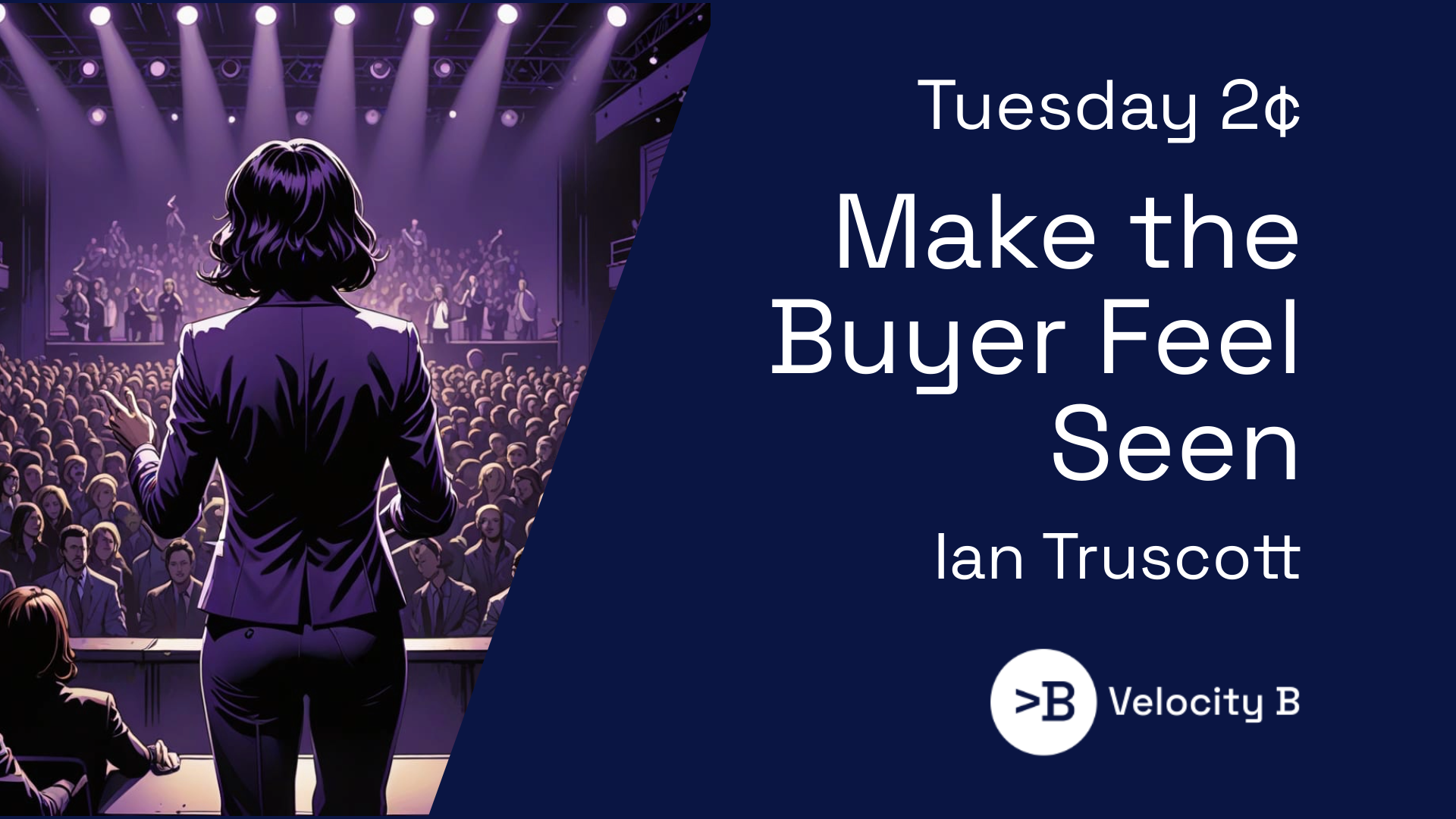Making the Buyer Feel Seen
This week, it’s a simple idea, pretty much summed up in the title!

I’ve been taking a deeper interest in the classic sales models, as we develop the Velocity B proposition, I’m also exploring this Revenue Department idea I shared a couple of weeks ago, of a tighter sales and marketing team and, as you might have seen, I posted about The Greatest Sales Deck I’ve Ever Seen structure for a sales deck this week - which I know is not a methodology, but it’s a way to position in sales.
I also had an interesting chat with my chums Simon Daniels and Louis Fernandes, who are digging into the classic sales methodologies (like SPIN, Jolt, and the Challenger Sale) on their podcast (What's Broken in GTM and How To Fix It).
These sales methodologies have something in common: They assume a level of influence that the seller can wield over the buyer.
When I was in pre-sales a couple of decades ago, I was taught solution selling, which talked about “reengineering the buyer’s vision”, ie, steering them toward the strengths of your product as a way to solve their problem.
I was curious, in light of the current zeitgeist, fuelled by the recent research from LinkedIn, 6Sense, et al., which suggests that B2B buyers are further down the buying journey when they meet sales - has this changed, now that today’s buyer has significantly more information about the problem, solution, and category than they did two decades ago?
Back then, the salesperson was an essential conduit to category knowledge, and they had a greater share of the buyer's ear and could persuade, influence, or challenge.
Today, maybe not so much.
That does not mean these models are no longer relevant or that sellers should not engage these methodologies when the buyer raises their hand; it's just that my hypothesis is that there is a change in the early steps of these models, which have a single goal: to build trust with the buyer through empathy and frame the problem and solution.
That change is that these steps must now be undertaken by marketing with thought leadership content reaching into the “dark funnel” (errr... no shit, Sherlock) and, in my shtick of describing sales and marketing as The Revenue Department, part of a tighter partnership.
For example, the S.P.I. in SPIN are Situation, Problem, and Implication, focusing the seller on talking about the buyer’s problem, gaining credibility, and trust. Of course, talking about ourselves, our features, and functions does not do that, and both sales and marketing will need to be very consistent in how the business understands and articulates the “SPI”.
In simple terms, making the buyer feel seen.